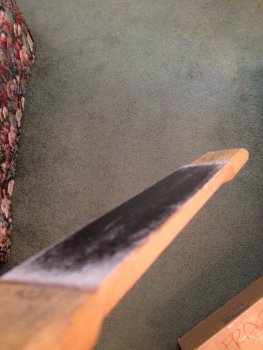I've been making knives for just under a year now, and there is one thing that I seem to have trouble with. When I go to do the final finishing on the handle of a full tang knife I always end up getting the grey steel dust, from sanding where the tang and wood (or other material) meet, on the handle material and I have trouble getting it to look clean again. I haven't seen anything regarding this problem on any videos, etc, and I have been coping with it by just pinning the handle scales on tightly without glue, then popping out the pins to do the final finishing on the steel, then gluing the handles onto the knife (i still have to re-sand after to get the extra epoxy residue off).
Any suggestions on this would be greatly appreciated.
Thanks, Nick
Any suggestions on this would be greatly appreciated.
Thanks, Nick


